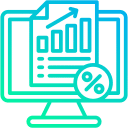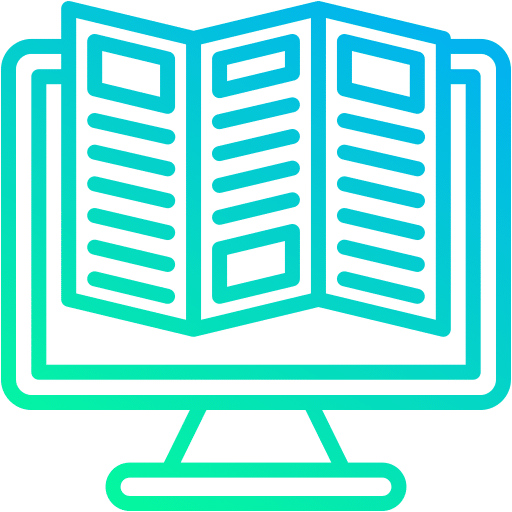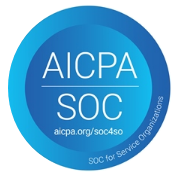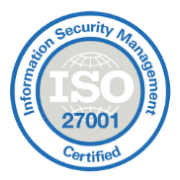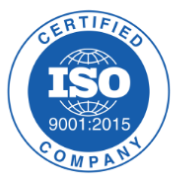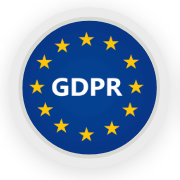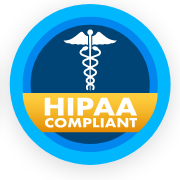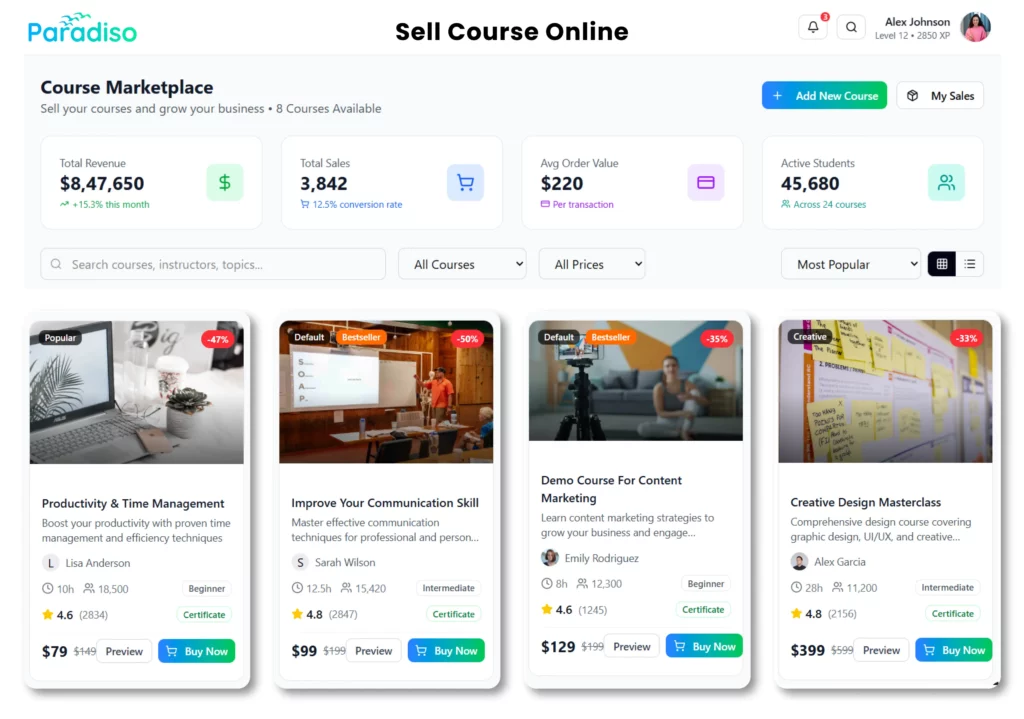In the evolving landscape of eLearning, understanding the standards that shape course delivery and tracking is essential. Two of the most influential standards in this field are SCORM and xAPI. While both are designed to enhance the learning experience, they differ in functionality, tracking capabilities, and implementation. In this blog post, we will explore these standards in depth and explain how innovative systems like Paradiso LMS make it easier to leverage these technologies for robust and flexible online training solutions.
What is SCORM?
SCORM, or Shareable Content Object Reference Model, is one of the pioneering standards in eLearning. It provides a framework for creating, packaging, and delivering digital learning materials that can be easily shared across multiple learning management systems (LMSs).
Key Characteristics of SCORM
- Interoperability: SCORM-certified content is designed to work seamlessly with any SCORM-compliant LMS. This ensures that courses can be transferred and used across various systems without needing significant modifications.
- Progress Tracking: One of the standout features of SCORM is its ability to track learner progress. It captures essential data such as course completion rates, test scores, and interaction metrics, allowing organizations to monitor training effectiveness.
- Modular Design: Courses built with SCORM are typically structured in modules. This makes it easier to update or reuse content, thereby reducing development time and costs.
- Industry Acceptance: Thanks to its widespread adoption, SCORM has extensive support resources, making it a reliable choice for organizations looking to implement standardized eLearning content.
SCORM Versions and Their Impact
Over the years, SCORM has evolved through multiple versions—namely SCORM 1.1, SCORM 1.2, and SCORM 2004. Although SCORM 1.1 laid the groundwork, it never gained widespread use. SCORM 1.2 became popular due to its simplicity and reliability, while SCORM 2004 introduced enhanced tracking features that made it the preferred choice for many modern training programs.
Unpacking xAPI: A Modern Approach to Learning Analytics
xAPI, also known as Experience API or Tin Can API, represents a significant step forward in tracking and analyzing learning experiences. Unlike SCORM, which focuses primarily on course completion and test scores, xAPI captures a broader range of learner activities and interactions.
The Fundamentals of xAPI
xAPI is designed to record detailed data about how learners interact with digital content. It does this by utilizing “statements” that record who did what, when, and in what context. Each statement typically consists of three components:
- Actor: The individual performing the action, usually identified by a unique user ID or email address.
- Verb: The action taken by the actor, such as “completed,” “viewed,” or “attempted.”
- Object: The target of the action, which might be a course module, a quiz, or any other learning resource.
For example, a statement might read, “Alex completed the safety training module.” This level of detail provides a comprehensive view of the learner’s journey.
Benefits of Adopting xAPI
- Enhanced Data Granularity: xAPI collects detailed insights, tracking even the minutest interactions like video pauses, button clicks, and time spent on specific tasks.
- Broad Compatibility: xAPI is not limited to traditional eLearning modules. It can track experiences from mobile apps, simulations, virtual reality, and even offline activities.
- Rich Analytics: With xAPI, organizations can dive deep into the learning process. This data supports the creation of highly personalized and adaptive learning pathways.
- Future-Ready Flexibility: xAPI’s adaptable nature makes it suitable for integrating emerging technologies, ensuring that your training programs remain relevant as the digital landscape evolves.
Comparing SCORM and xAPI
Understanding the differences between SCORM and xAPI is critical when deciding which standard best fits your organization’s training needs. Below is a comparison that highlights the main differences in their tracking capabilities and functionalities:
Tracking Capabilities
|
Aspect
|
SCORM
|
xAPI
|
|---|---|---|
|
Data Collection
|
Tracks course completions and assessment scores
|
Records comprehensive learner interactions and experiences
|
|
Detail Level
|
Monitors predefined interactions within a module
|
Captures granular data including media usage, clicks, and more
|
|
Offline Learning
|
Primarily designed for online activities
|
Can track learning that happens offline as well
|
|
Social Learning
|
Limited tracking of social interactions
|
Provides detailed insights into collaborative and social learning
|
|
Reporting Depth
|
Basic reporting suited for traditional eLearning
|
Advanced analytics that inform personalized learning strategies
|
Implementation Considerations
- Ease of Use: SCORM is known for its straightforward implementation, making it a go-to for organizations with limited technical resources.
- Infrastructure Requirements: xAPI might require additional components, such as a Learning Record Store (LRS), to manage the detailed data it collects.
- Long-Term Goals: If your organization plans to integrate cutting-edge technologies like VR or simulation-based training, xAPI offers the flexibility and data granularity needed to support these advanced experiences.
The Role of Paradiso LMS in Modern eLearning
A significant advantage of today’s eLearning environment is the availability of LMS platforms that support both SCORM and xAPI. Paradiso LMS is one such platform that provides organizations with the versatility to manage both standards within a single, cohesive system.
Why Choose Paradiso LMS?
- Dual Compatibility: Paradiso LMS supports both SCORM and xAPI, allowing organizations to maintain legacy content while gradually integrating more advanced tracking methods.
- User-Friendly Interface: Designed to be intuitive, Paradiso LMS simplifies the process of content creation, deployment, and tracking, ensuring that technical hurdles do not stand in the way of effective training.
- Comprehensive Reporting: With its robust analytics capabilities, Paradiso LMS provides actionable insights that help organizations optimize their training programs, whether they rely on the simplicity of SCORM or the detailed data of xAPI.
- Scalability: As your training needs evolve, Paradiso LMS scales with your organization, supporting everything from basic compliance training to complex, interactive learning experiences.
Making the Right Choice for Your Organization
When deciding between SCORM and xAPI, it is essential to consider your current training requirements and long-term strategic goals. Here are some key considerations to help you make an informed decision:
Assessing Your Training Needs
- Data Requirements: Determine the level of detail you need from your training analytics. If you only need to track course completions and basic test scores, SCORM might be sufficient. For a more nuanced understanding of learner behavior, xAPI is preferable.
- Content Types: Consider the types of content you plan to deliver. If your training involves interactive simulations, mobile learning, or VR, xAPI’s ability to capture diverse learning experiences is a significant advantage.
- Existing Infrastructure: Evaluate your current LMS and its compatibility with these standards. Transitioning to a platform like Paradiso LMS, which supports both standards, can provide a seamless upgrade path for your training programs.
Future-Proofing Your eLearning Strategy
As technology continues to evolve, your training programs must be adaptable to new trends and innovations. xAPI offers the flexibility to integrate emerging technologies, making it an excellent choice for organizations looking to future-proof their learning environments. However, for many traditional training scenarios, SCORM remains a reliable, cost-effective option.
Reporting and Analytics Needs
The decision between SCORM and xAPI often comes down to the depth of reporting required. SCORM offers straightforward metrics that work well for compliance and standard training modules, while xAPI delivers detailed, actionable insights that can drive more personalized and effective learning experiences
Conclusion
The choice between SCORM and xAPI ultimately depends on the unique needs of your organization. SCORM has long been the standard-bearer for eLearning content, providing a robust, reliable framework for course development and tracking. On the other hand, xAPI represents the future of learning analytics with its ability to capture a wide array of learner interactions and support innovative training modalities.
In today’s fast-paced digital world, platforms like Paradiso LMS offer the best of both worlds by supporting dual compatibility. This flexibility ensures that you can maintain your existing training programs while seamlessly integrating new technologies and advanced tracking capabilities as your organization grows.
By carefully assessing your training needs, planning for future technological advancements, and leveraging the powerful features of modern LMS platforms, you can create an eLearning strategy that not only meets but exceeds your organization’s goals. Whether you opt for the time-tested reliability of SCORM or the detailed insights provided by xAPI, your commitment to delivering engaging and effective learning experiences will drive long-term success.





